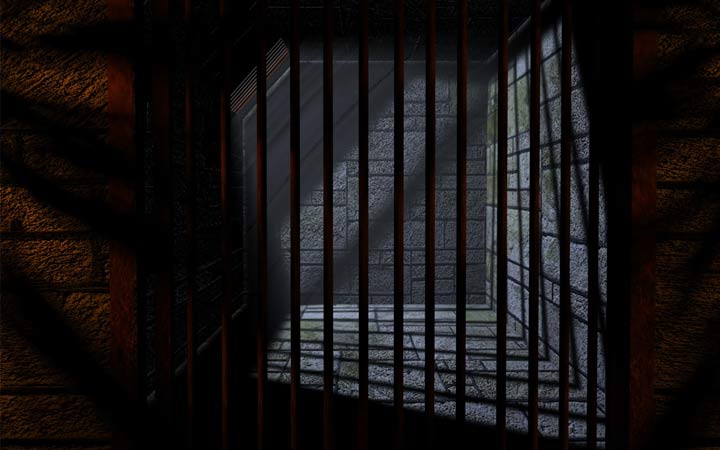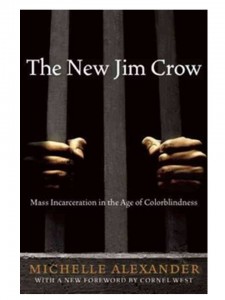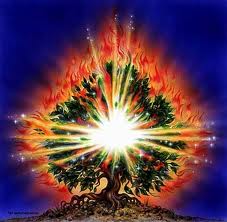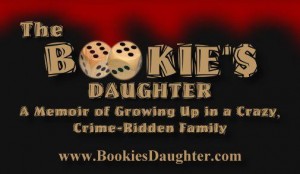By OcJim
Like many others I thought the election of a black president marked the end of bias and racism in our country. Even the coded — He’s not one of us – rather unsubtle suggestion, portrayed by birthers and Tea Partyers against Barack Obama might be seen as the last vestiges of racism.
But recent events have prompted me to doubt more and more that racism in our country is gone. Indeed, The New Jim Crow, a book by Michelle Alexander, has provided convincing evidence that racism seems to never die but to twist into new facets and faces. Though those twists may be made by an agenda-bound political or economic interest group, racism still must be there to be exploited.
The results and ramifications, if not the intention, of the war on drugs became The New Jim Crow. The old Jim Crow ended with the Civil Rights Movement of the 1960s and a plethora of federal laws that helped to end segregated schools and the separatist South. The War on Poverty and civil rights legislation followed, and on its heels, anger, resentment and bitterness among southern states and a growing anxiety among others in northern states.
That climate spread, helping to usher in a law and order theme for politicians like Richard Nixon, as polls in the late 1960s said that law and order had broken down and the majority blamed “Negroes who start riots” and “Communists.”
The time was ripe for Ronald Reagan who ran against welfare and for law and order. His “welfare queen” was code for “lazy, greedy, black ghetto mother.” Food stamps allowed a “fellow ahead of you in the grocery line to buy T-bone steak while you stood there with hamburger.”
His War on drugs in 1982 allowed the federal government to get into the state business of law and order, increasing budgets for the FBI, the DOD, and the DEA while reducing funds for anti-drug education and the National Institute on Drug Abuse. In other words prisons began to replace education as the tool against a newly-defined drug war. Reagan’s drug war came when only 2% of the population thought it was a problem, even before Crack, the favorite drug among blacks, hit the streets in 1985.
The economic collapse of manufacturing that accompanied globalization and deindustrialization saw black employment go from 70% in 1970 to 28% in 1987. Bill Clinton even added to the misery of the poor populations by ending welfare and supporting more anti-drug bills that kicked drug offenders, even marijuana users, out of public housing. To top it off, his administration supported diverting public housing money to prison construction, this at a time when marijuana possession arrests accounted for 80% of the growth in drug arrests in the 1990s.
Meanwhile the US Supreme Court was striking down suits against traffic stops, that looked for drugs. Most smacked of racial profiling with a focus on drug arrests of blacks. Other suits cited the use of military-equipped SWAT drug raids in mostly black neighborhoods, many prompted by other drug offenders looking for lighter sentences. Such activities were financed by federal payments to local jurisdictions for local drug busts.
Ms. Alexander offers many studies, but one mentioned was of Maryland traffic stops in the 1990s indicating that African Americans made up only 17% of drivers along a stretch of I-95 outside of Baltimore, yet they were 70% of those stopped and searched for mostly drugs.
The prison population during the past 25 years leaped from approximately 350,000 to 2.3 million due to changes in laws and policies, not changes in crime rates. Drug offenders account for 60% of that expansion in state prisons. Also telling is that as of September, 2009 only 7.9% of federal prisoners were convicted of violent crimes. Three out of four young black men (and nearly all in the poorest neighborhoods) in most black communities can expect to serve time in prison[i]. Though blacks are some 13% of the nation’s population, in seven states, African Americans constitute 80 to 90 percent of all drug offenders sent to prison[ii].
Throughout this well-documented book, Ms. Alexander builds an ironclad case demonstrating that the War on Drugs, which carries the mass incarceration of mostly young blacks, functions much like a racial caste system. She never says that it was conspiratorial and intentional, but its birth was built around politicians using the anger and resentment following the civil rights movement to wage a war that funneled money away from education to prisons while doing the bidding of monolithic corporations to deindustrialize and globalize the American economy. All these actions rendered many African-Americans jobless and without hope. The drug war then swept them up, incarcerating them at record rates.
Adding to the travail of blacks is a caste system that sweeps beyond prison walls. Of the nearly 7.3 million people under correctional control, only 1.6 million are in prison. Those who are on parole or probation are branded criminals and felons in a permanent second-class status, only 19% convicted of violent crimes. For example, felons cannot vote, are barred from public housing, are outcasts in their own communities, and find great difficulty in finding employment. Coded racism tends to work more against black and brown people according to Alexander.
You may start reading The New Jim Crow with a skeptical mind, but I guarantee that the weight of Alexander’s evidence will make you say, “I can’t believe I didn’t see this for what it was, an effort to exploit fear, racism and resentment to gain political capital, with Republicans the leaders, but Democrats in the running too.
____________________________________________________________________________________________________
Follow more from this author here —> Common Good
[i] Michelle Alexander, The New Jim Crow, page 23.
[ii] Human Rights Watch, Punishment and Prejudice: Racial Disparities in the War on Drugs, HRW Reports, vol. 12, no. 2 (May 2000)






Tuo11
29 Mar 2012War on drugs = big government policy = oppression. Great article.
Pingback: Your Questions About Emotional Freedom